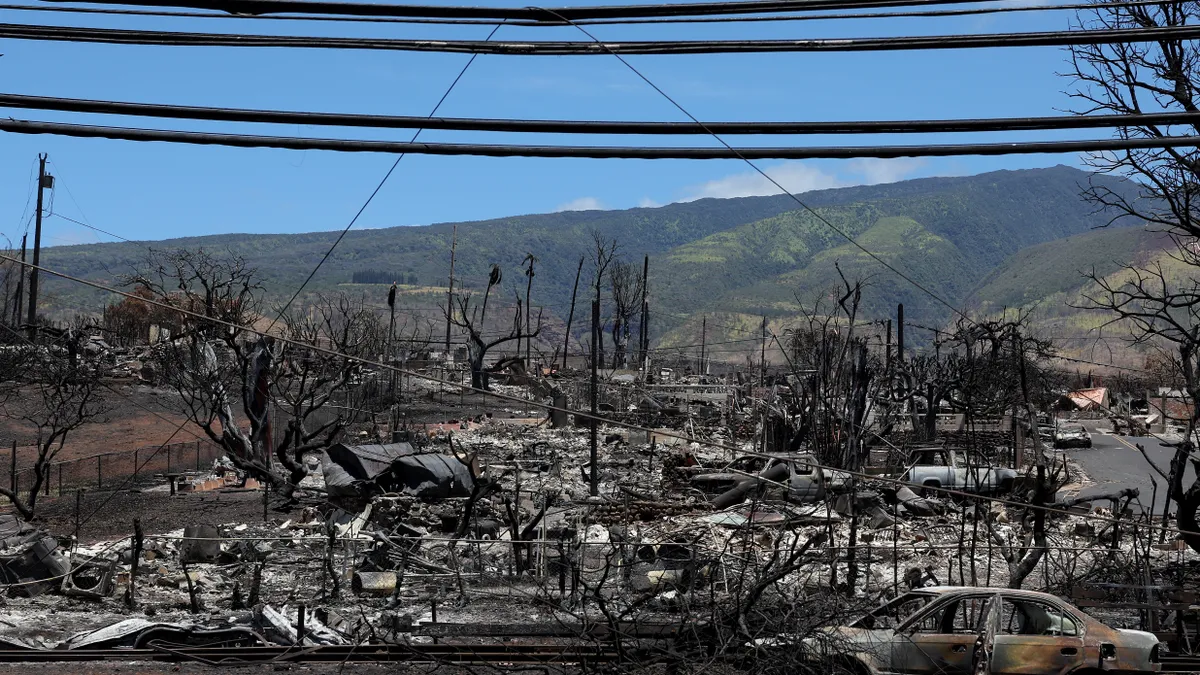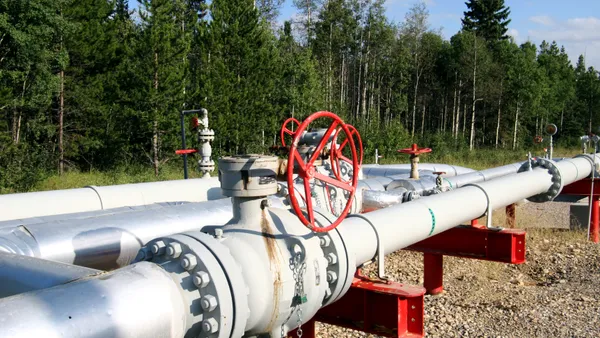Dive Brief:
- Hawaiian Electric President and CEO Shelee Kimura defended some of the decisions the utility made immediately before the deadly wildfires that broke out on Maui on Aug. 8 at a hearing conducted Thursday by lawmakers in the U.S. House of Representatives.
- The utility’s protocols did not include de-energizing power lines during high-fire-risk conditions, Kimura told lawmakers. In 2019, the utility began developing a wildfire prevention plan that eventually concluded that proactive shut-offs were not “the appropriate fit for Hawaii,” she said.
- Lawmakers quizzed Hawaii officials on the possibility of undergrounding power lines in the state. Undergrounding power lines is about five times more expensive than keeping them overhead — an expensive proposition for an island like Maui that only has 70,000 ratepayers, Kimura said.
Dive Insight:
The wildfires that broke out on Maui in August led to an estimated 97 fatalities and affected at least 2,200 structures on the island. Soon after, Hawaiian Electric faced a lawsuit alleging the fire was ignited by its power lines. The company also faces financial and cost recovery risks tied to the fire, according to Moody’s Investors Service.
On Aug. 8, a fire began at 6:30 am that appears to have been sparked by Hawaiian Electric power lines that fell during high winds, Kimura told lawmakers at the Energy and Commerce Committee hearing. The Maui County fire department responded to this fire and reported that it was contained by 9 am. However at 3 pm — a time when all of Hawaiian Electric’s power lines in West Maui had been de-energized for more than six hours — a second fire began in the same area, she said.
“The cause of that afternoon fire, that spread to Lahaina, has not been determined. We are working tirelessly to figure out what happened and we are cooperating fully with federal and state investigators,” Kimura added.
When asked by lawmakers why the utility did not turn off the power in its lines amid reports of high-risk weather conditions, Kimura said that after studying California’s processes, the utility concluded that pre-emptive power shut offs were not a good fit for Hawaii.
California utilities, which have also struggled with the issue of wildfires caused by their infrastructure, have been deploying “public safety power shutoffs” for years. Utilities in Nevada and Oregon also employ similar programs.
Hawaiian Electric’s protocols, however, called for responding to high-risk weather conditions by disabling a setting on its system that automatically recloses a circuit if there’s a fault, meaning if a line picks up a fault, it won’t be re-energized, Kimura said. However, “we are absolutely re-examining our protocols,” she said.
Lawmakers also brought up the prospect of burying power lines in Hawaii to prevent future fires. Currently, around 50% of the power lines on Maui are underground, Kimura said — compared to the roughly 33% in California. Customers can opt to have their lines undergrounded, and have to pay for it themselves.
As Maui looks to rebuild after the fires, some community members in Lahaina would understandably like to have the power lines buried, Kimura said. But while these conversations will need to continue, this can be an expensive proposition for a place that already has the highest electricity rates in the nation, she said.
Burying power lines could have other implications as well, Leodoloff Asuncion, Jr., the chairman of the Hawaii Public Utilities Commission, told lawmakers. From a technical perspective, doing so runs the risk of hitting Hawaii’s water table pretty quickly, he said, adding that there is also a cost to maintaining lines that are underground.
“It does come at a cost, to the ratepayer, to the company, basically to all of us in the state of Hawaii,” Asuncion said.















